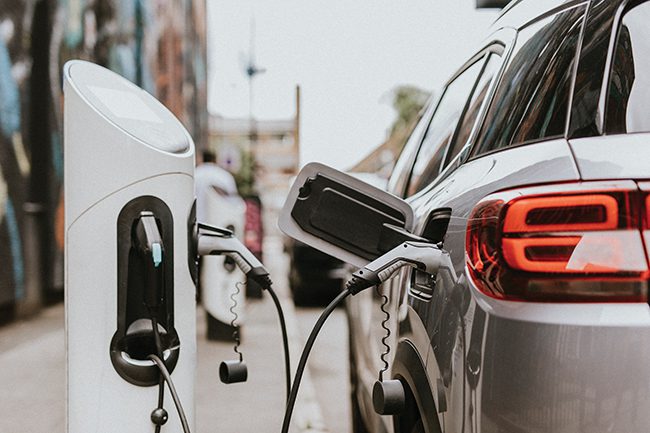Improve Electric Grid Resilience Through Integration of Energy Storage at EV Charging Stations
By 2030, it’s expected that half of U.S. car sales will be electric, and while this is a positive step forward in transportation decarbonization, this change also comes with challenges and concerns pertaining to grid readiness.
The Biden administration has announced a plan to install 75,000 miles worth of electric vehicle (EV) charging stations; however, it is not certain that all desired charging locations are qualified for these power requirements. New sites might warrant power infrastructure upgrades or be assessed with a utility tariff structure that can present a challenge to speedy deployment and add costs. Even if such hurdles are overcome, the overall demand for energy must be closely monitored to avoid a strain on the grid that can result in disruptions.
In an effort to proactively prepare for these challenges, charge point operators (CPOs) can future-proof their upcoming installations with the integration of local energy storage systems (ESS), particularly systems that offer artificial intelligence (AI)-enabled peak shaving capabilities. An ESS, combined with energy management system (EMS) software that controls its operation, allows site owners to benefit from a controlled electricity demand.
The EMS’s main task is to provide a continuous delivery of power according to the site needs, and reduce demand charges or grid strain at the same time. In recent years, software technology in the field of energy storage operation has progressed significantly to include advanced AI algorithms that can monitor the site and predict its load behavior and patterns with high accuracy, bringing superior performance and savings to CPOs.
Mass Adoption of Local Peak Shaving Could Lessen Need for Grid Upgrades
The demand for electricity at EV charging stations (Figure 1) has increased recently and is expected to grow, as demand for EVs continues to accelerate. When the overall demand for electricity is too high from charging and other major loads, the grid becomes strained, leading to potential blackouts and other undesirable grid conditions.
 |
|
1. Utilities and grid operators are preparing for the increased load from charging electric vehicles (EVs). Having energy storage systems available at charging sites provides better control of electricity demand from EV charging. Source: Envato Elements |
Peak shaving allows site operators to better control and mitigate electricity demand by leveling out peaks in demand while continuously delivering power and reducing charges at the same time. Adapting AI within ESS, site operators can accurately predict load profiles while supporting grid operations.
Peak shaving, when implemented by a local ESS, can be widely adopted to meet electricity demand, and increase grid reliance as the number of EVs grows. This also means being able to deploy a charging station in areas where current utility infrastructure is not available, slowing down the deployment and impacting return on investment (ROI).
Fast charging sites, which may be located next to a convenience store, supermarkets, or other retailers, usually include more loads than just a charging station; therefore, looking at the solution from an operations and maintenance standpoint, integrating ESS with the right design can provide backup for the site itself in a blackout period. This makes the site more resilient and adds a source of revenue by providing backup for utilities when needed during times of peak demand.
Matching energy storage with an EMS and smart charging solution enables dynamic load balancing and increases grid flexibility. Moving forward, this approach will ensure grid robustness and support for versatile loads at disparate locations that would otherwise require a massive infrastructure investment.
Offsetting EV Charging Site Demand Without Reducing Power
There are many functions and applications for energy storage integrations, but currently the main factor driving deployments of these systems is a desire to ease site demand charges and facilitate quick deployments where utility infrastructure is not available. The EMS can predict the highest peak and strategically discharge the battery when the site reaches that peak. This enables the site to peak shave effectively and avoid demand spikes without having to compromise on convenience or user experience, which is especially important for direct current fast charging (DCFC).
In order to keep up with the energy transition, we must work to support the grid and provide local cost-effective ESS. ESS and related software developments can fulfill various applications that will support accelerated use of EVs and grid integration without causing instability or incurring high costs for operators. ESS that are compatible with on-site charging infrastructure and offer peak-shaving capabilities are available today and only becoming more economical, more energy dense, and quicker to deploy.
—Avraham Edelstein is vice president of research and development at Sparkion.